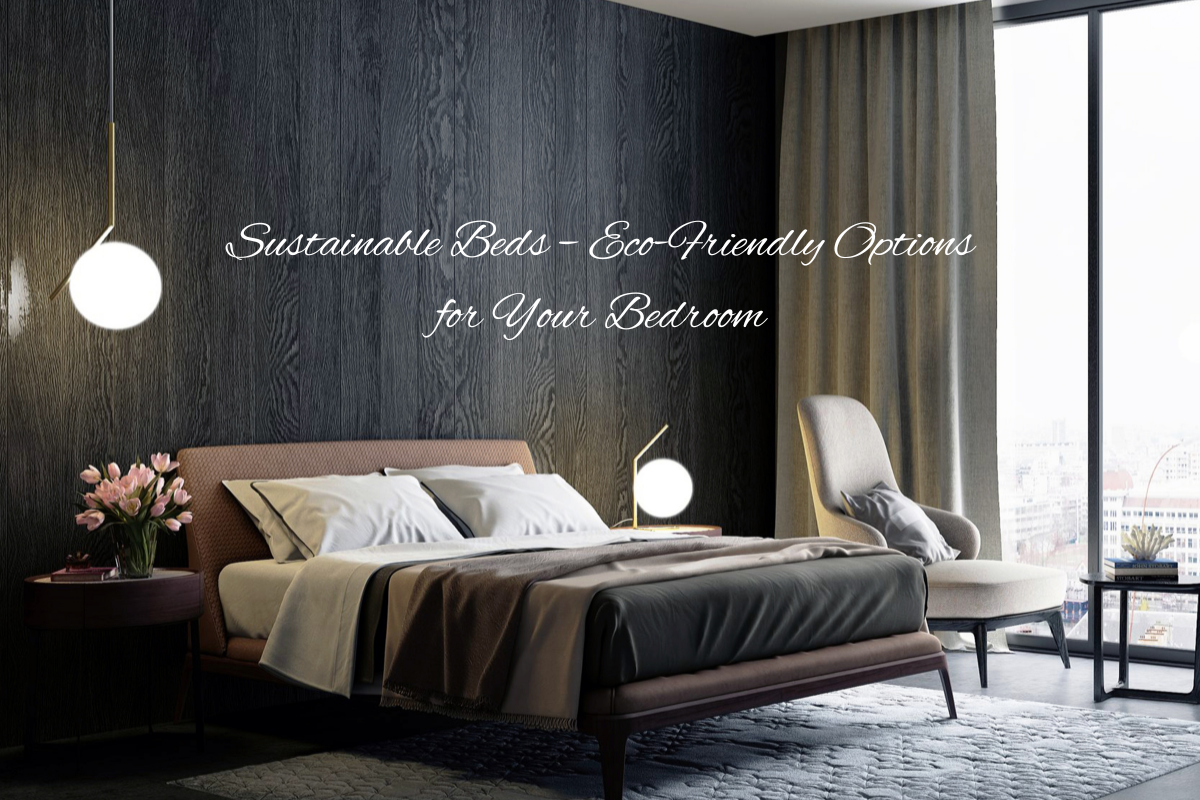Looking to create a greener, healthier home? Start where you rest—your bedroom. Choosing a sustainable bed isn’t just good for the planet; it’s better for your health, air quality, and long-term peace of mind.
This guide to eco-friendly beds covers:
- Non-toxic, sustainable bed frames and materials
- Organic and renewable mattress options
- Responsible brands prioritizing ethical production
- Tips to make your bedroom more environmentally conscious
Whether you’re furnishing a new home or upgrading your current space, these sustainable bed choices help you rest easy—knowing your sleep supports the Earth.
Sustainable Materials
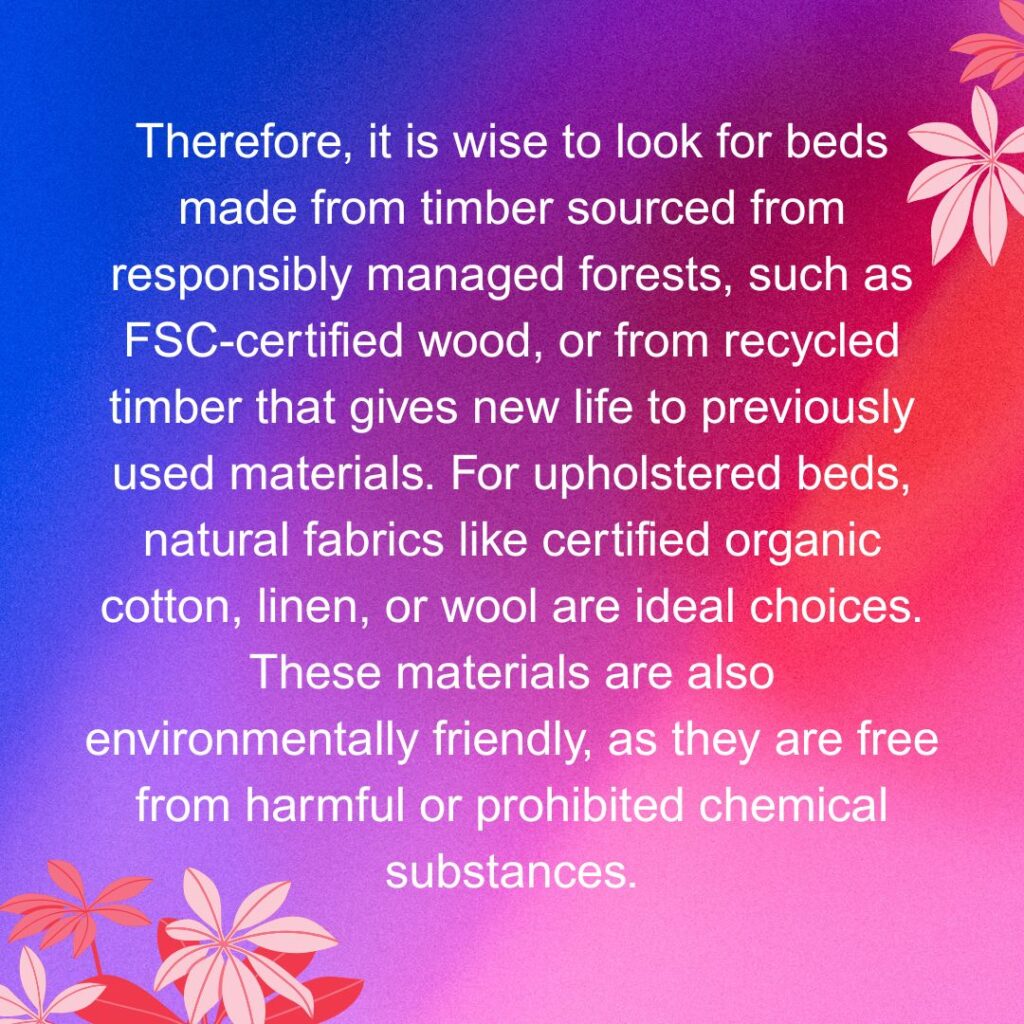
Therefore, it is wise to look for beds made from timber sourced from responsibly managed forests, such as FSC-certified wood, or from recycled timber that gives new life to previously used materials. For upholstered beds, natural fabrics like certified organic cotton, linen, or wool are ideal choices. These materials are also environmentally friendly, as they are free from harmful or prohibited chemical substances.
Durability
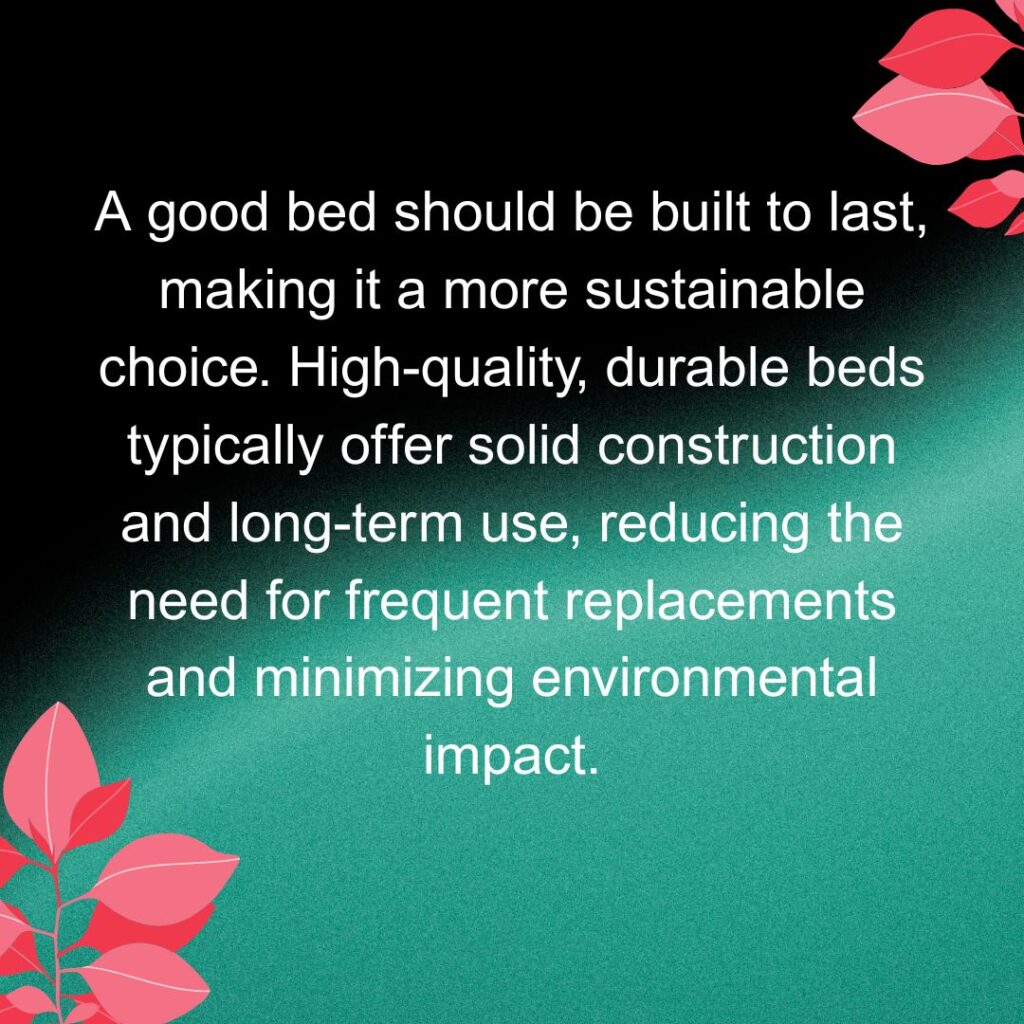
A good bed should be built to last, making it a more sustainable choice. High-quality, durable beds typically offer solid construction and long-term use, reducing the need for frequent replacements and minimizing environmental impact.
Recyclable Components
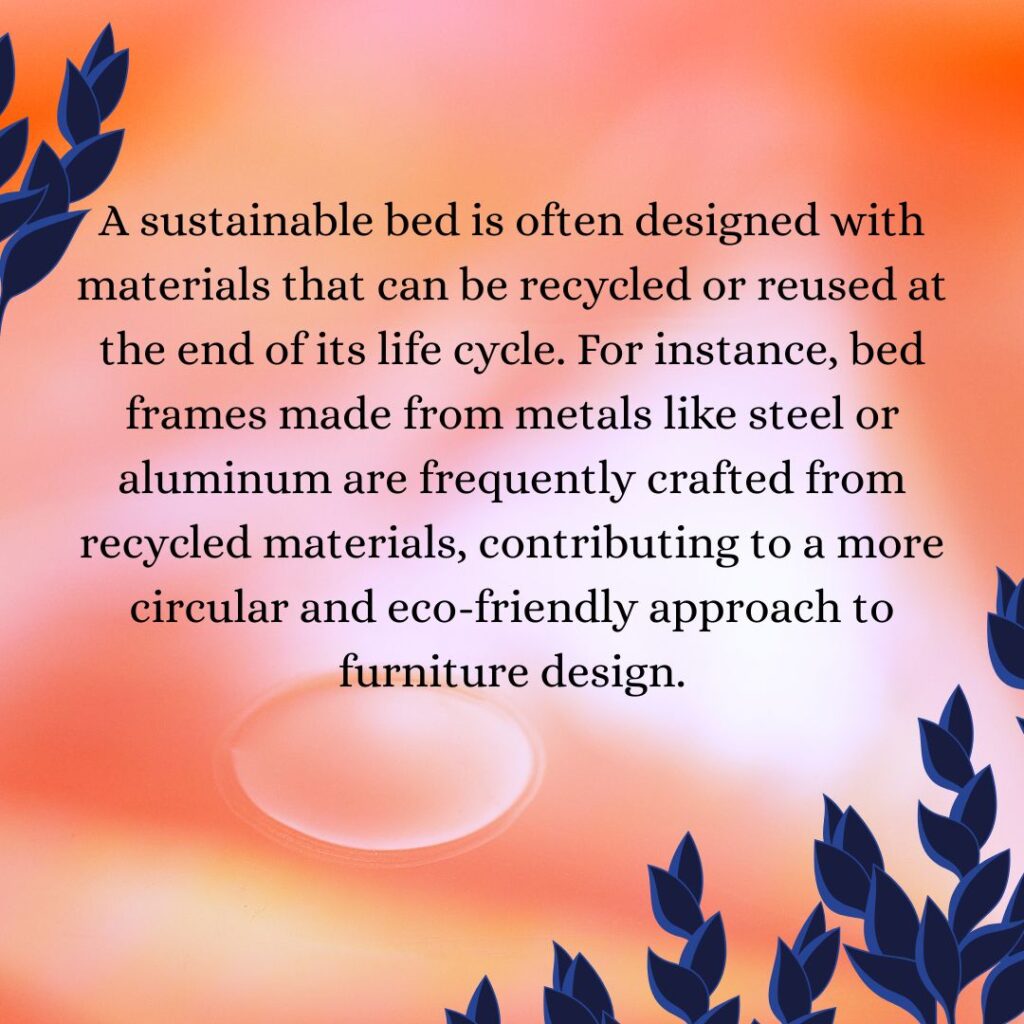
A sustainable bed is often designed with materials that can be recycled or reused at the end of its life cycle. For instance, bed frames made from metals like steel or aluminum are frequently crafted from recycled materials, contributing to a more circular and eco-friendly approach to furniture design.
Low-VOC Finishes
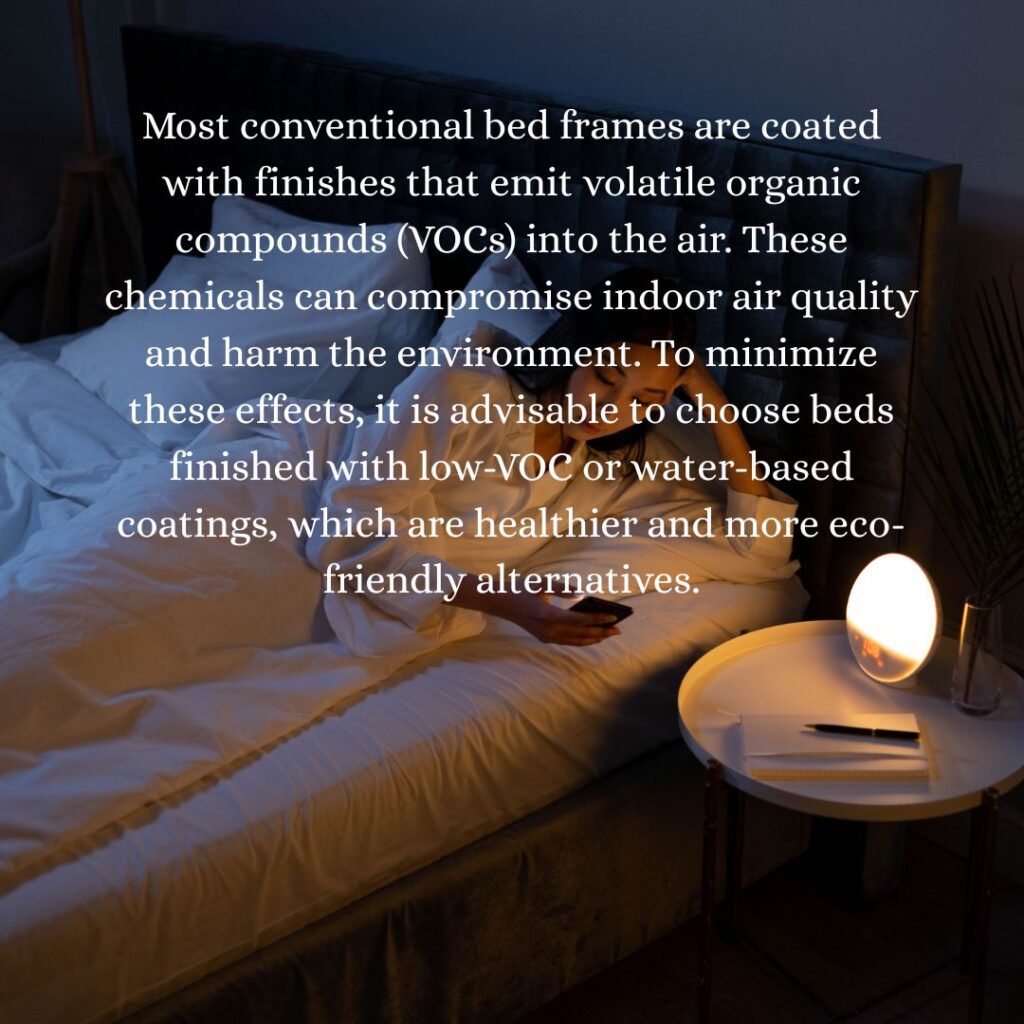
Most conventional bed frames are coated with finishes that emit volatile organic compounds (VOCs) into the air. These chemicals can compromise indoor air quality and harm the environment. To minimize these effects, it is advisable to choose beds finished with low-VOC or water-based coatings, which are healthier and more eco-friendly alternatives.
Divan Beds
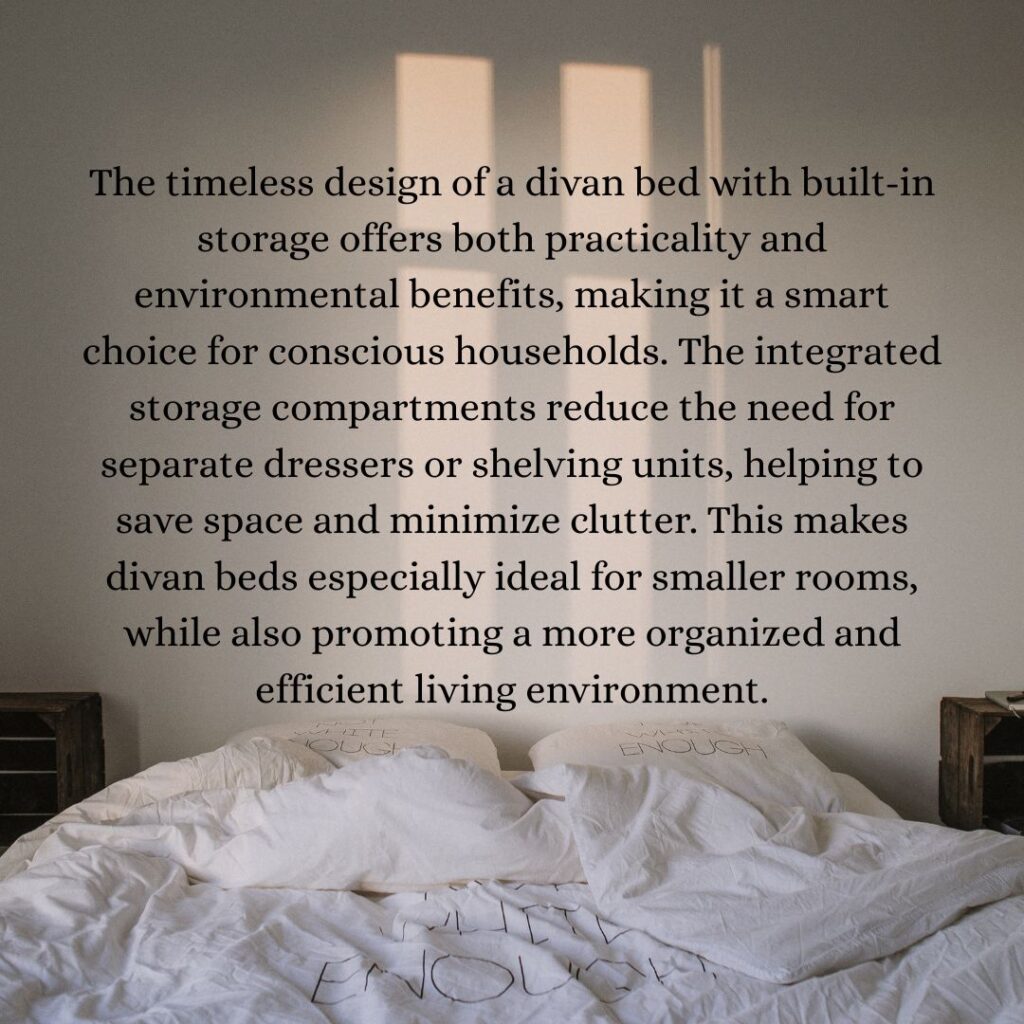
The enduring appeal of a divan bed with built-in storage makes it a smart and eco-conscious choice for households that value both functionality and sustainability. The integrated storage compartments reduce the need for separate dressers or shelves, helping to optimize space—especially in smaller rooms—while keeping your living area neat and organized.
These beds are typically constructed with solid hardwood frames sourced from sustainably managed forests. Additionally, they often feature eco-friendly upholstery made from recycled polyester and organic cotton, ensuring both comfort and environmental responsibility. Choosing a high-quality, sustainable divan bed not only supports the preservation of natural resources but also offers long-term value by reducing the need for frequent replacements.
Solid Wood Beds
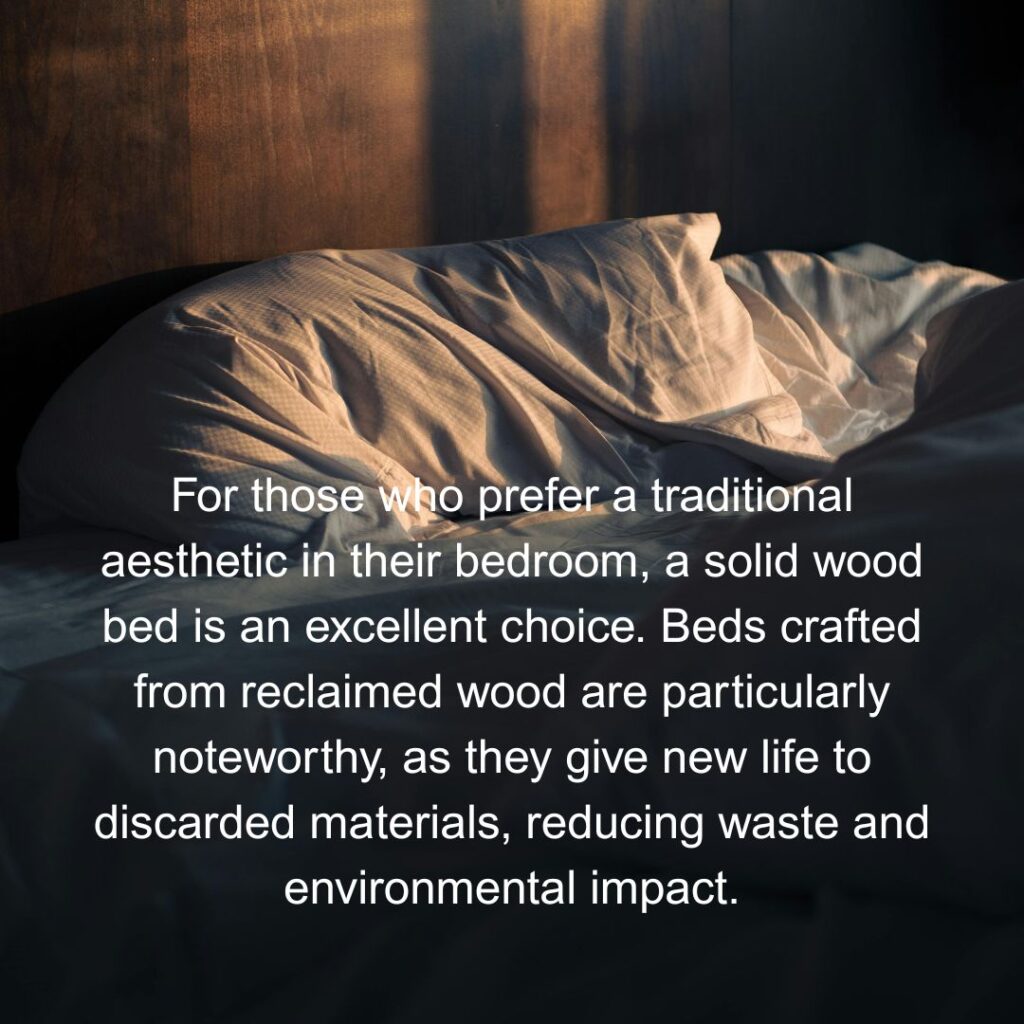
For those who prefer a traditional aesthetic in their bedroom, a solid wood bed is an excellent choice. Beds crafted from reclaimed wood are particularly noteworthy, as they give new life to discarded materials, reducing waste and environmental impact.
Moreover, solid wood beds offer a unique rustic charm, thanks to the natural imperfections and textures found in the timber’s surface. When opting for newly sourced solid wood, it’s best to choose products certified by the FSC (Forest Stewardship Council) to ensure the wood comes from responsibly and sustainably managed forests.
Ottoman Beds
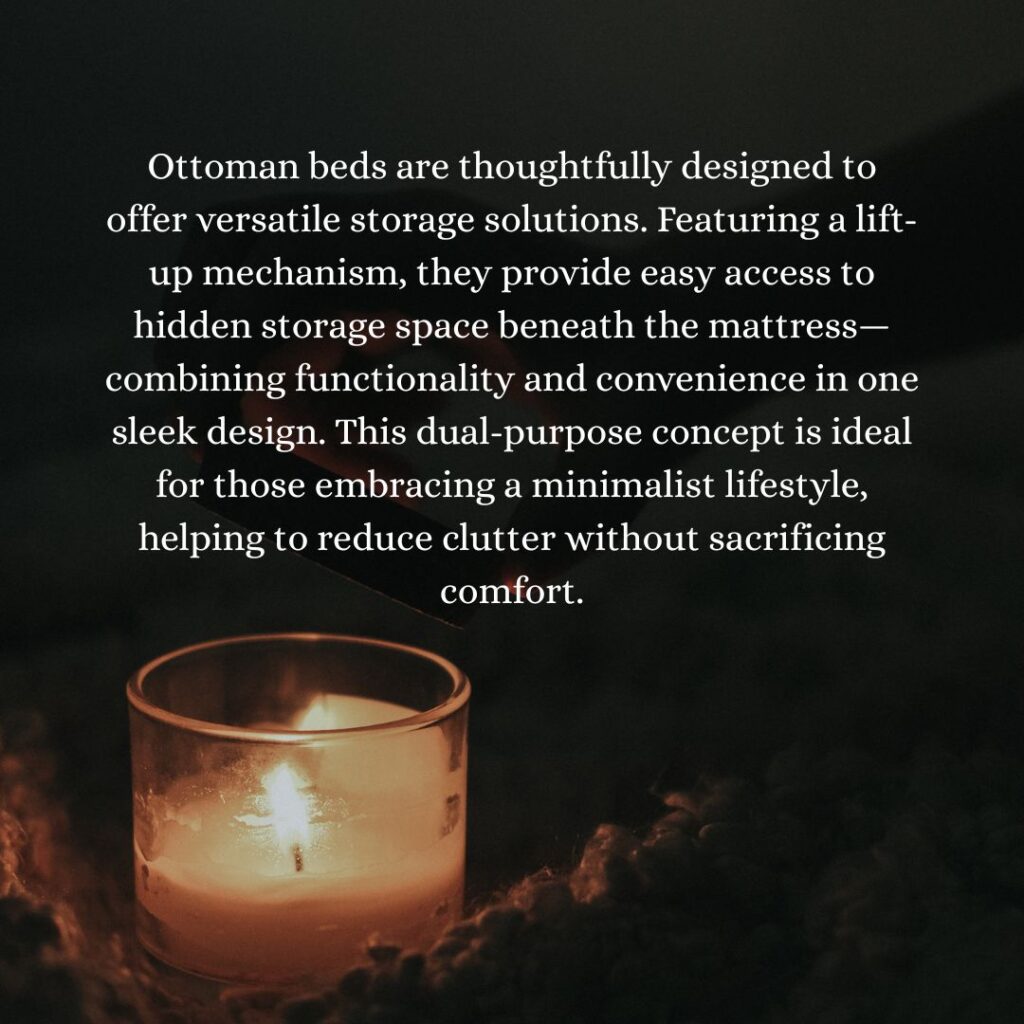
Ottoman beds are thoughtfully designed to offer versatile storage solutions. Featuring a lift-up mechanism, they provide easy access to hidden storage space beneath the mattress—combining functionality and convenience in one sleek design. This dual-purpose concept is ideal for those embracing a minimalist lifestyle, helping to reduce clutter without sacrificing comfort.
For eco-conscious consumers, ottoman beds made from sustainable materials and fabrics are an excellent choice. By selecting designs that meet environmental standards, you can enjoy both practicality and style while supporting a more sustainable way of living.
Metal Beds
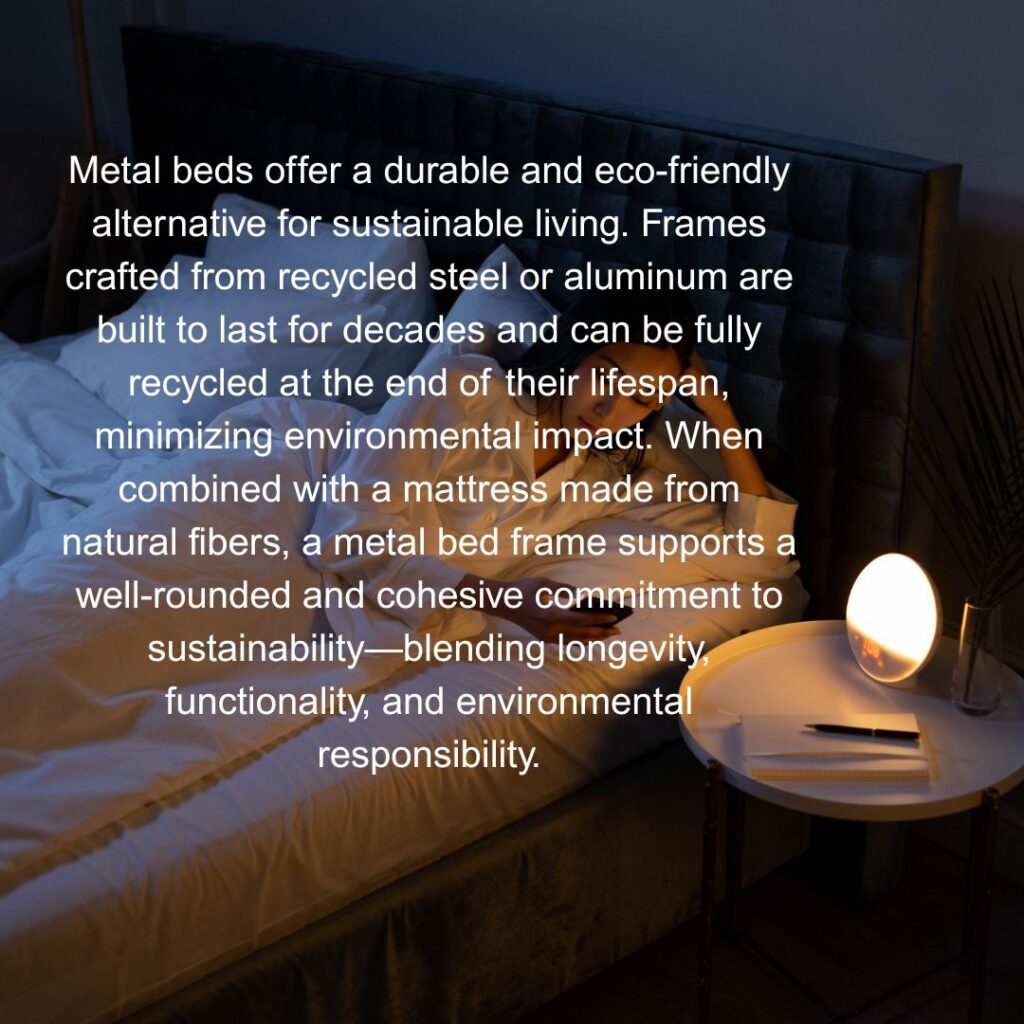
Metal beds offer a durable and eco-friendly alternative for sustainable living. Frames crafted from recycled steel or aluminum are built to last for decades and can be fully recycled at the end of their lifespan, minimizing environmental impact. When combined with a mattress made from natural fibers, a metal bed frame supports a well-rounded and cohesive commitment to sustainability—blending longevity, functionality, and environmental responsibility.
FAQs – Sustainable and Eco-Friendly Beds
1. What makes a bed sustainable?
A sustainable bed uses materials like FSC-certified wood, organic cotton, natural latex, or recycled metals, and is produced with eco-conscious practices that minimize waste and emissions.
2. Are eco-friendly beds durable?
Yes. In fact, many sustainable beds are built to last longer, using solid materials and craftsmanship that reduce the need for replacements.
3. What are some popular materials for eco-friendly beds?
Common materials include bamboo, reclaimed wood, organic wool, natural latex, and metal frames with non-toxic finishes.
4. Do sustainable beds cost more than conventional ones?
While some may have a higher upfront cost, they offer better long-term value in durability, safety, and environmental impact.
5. Are there eco-friendly mattress options too?
Absolutely. Look for organic mattresses made from latex, cotton, or wool that are certified by GOTS, GOLS, or OEKO-TEX standards.
Conclusion: Rest Well, Live Green
Switching to a sustainable bed is more than a style choice—it’s a lifestyle decision. By investing in eco-friendly materials and ethical brands, you’re creating a safe, toxin-free space while helping reduce your carbon footprint.
So go ahead—sleep soundly knowing your bedroom is as kind to the planet as it is to your body.
Because sustainability starts where your day ends.




